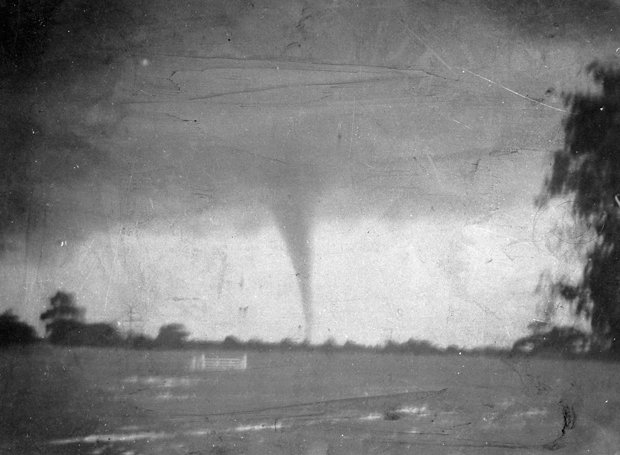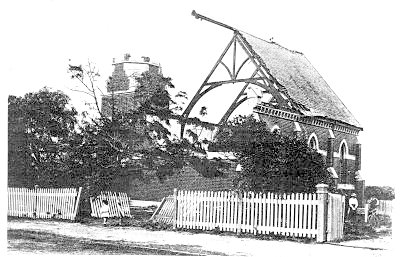As an aside, the Trove database is absolutely phenomenal. I relied on that for probably 80% of the research for Cyclone Mahina. I also found several other cyclones with extremely low recorded pressures (usually by ship captains, but occasionally land-based barometers). Sort of suggests there have been plenty of high-end extreme weather events Down Under that we know little to nothing about, which I suppose shouldn't be surprising considering how vast and sparsely populated much of the continent was (and is).
The only problem with it (aside from recent interface changes making it harder to navigate) is that it only goes up to 1954 for all but a few titles. This actually makes it harder to find information on more recent events than older ones. I'd like to try find more info on some sixties and seventies events but it just isn't there. Otherwise it's head and shoulders above anything else, and it's all free (well, except for the taxes). Compare that to the exorbitant prices charged by the archives in many other countries.
do wonder if there are any extremely violent Australian tornadoes hidden in newspaper archives from the pre-1940 era.
I very much doubt there'd be any that aren't already known. Violent damage generally means hitting populated areas and that makes people sit up and notice. It'd be mostly small events that hit nothing and were seen by no-one. Violent events tend to stick out, given us things like the April 1920 outbreak with only 17 recorded tornadoes but six potential violent ones.
Anyway, a few more notable events (none spectacular, but if Grazulis considers F2 significant and this thread is for significant tornado events, that's good enough).
The earliest tornado photographed in Australia was at Marong, near Bendigo on 27/9/1911. It tracked an irregular path from the (now) locality of Derby parallel to the railway line past Leichardt before passing crossing Wilsons Hill and destroying houses south of Marong and near Lockwood. The path was at least 14 km long, and may have been much longer causing minor damage to fences 'for miles' beyond the last significant structures. It was very narrow as the photograph shows, varying from five chains to as narrow as one chain (100 down to 20 metres). It was reported to have moved at about 20 mph, though considering how long lasting it would have been at that speed I suspect it was probably faster. Numerous houses were largely destroyed and one person died from their injuries two days later, his house had one wall standing. The consensus rating seems to be F3. The storm was accompanied with large hail.
There is an
Australian Geographic article in which an amateur researcher and local chaser claims reports said a six-ton stamper battery was shifted several miles, in case you thought ludicrous exaggerations (like the supposed pickup being carried 20 miles by the Lawrence F5) were only an American thing. I can't find any reference to this in newspaper reports and the supposed weather bureau report by Henry A. Hunt is unfindable to me. From the newspaper reports I have the battery stood across the road from the house where the fatal injury occurred and the
Bendigo Independent reported a 3 hundredweight (c.150 kg) pipe was moved moved 40 metres and and a 12 cwt (c.600 kg) bucket 100. There were also damaging tornadoes at Marong in 1892 and 1940.

The other strong tornado to impact a major city aside form the Brisbane '73 event was the Brighton Tornado in Melbourne on 2/2/1918. It killed two and caused £100k or so damage. It has been retroactively rated F3 although I am somewhat sceptical.
The deadliest tornado in Australia was in the locality of Wahpunga near the village of Kin Kin, near Noosa on the Sunshine Coast. This is a region regularly visited by supercells in November and December but the tornado was on 14 August 1971 and I'm not entirely sure what weather patterns would have generated it, as that area rarely gets any sort of storm at that time of the year. It struck at night on a damage path described as up to 1/2 mile wide and five miles long. Luckily it missed the main village. Eight houses were destroyed, some, likely unanchored, lifted small distances off their foundations. Not rated, but F2 to maybe F3 would seem appropriate. There also damaging tornadoes there about four decades prior and in 1985.

The last deadly tornado in Australia as of the time of writing was at Sandon, Victoria, on 13/11/1976. it had a path of 6 km and was apparently up to 400 metres wide, although again I'm a bit sceptical there as reports indicate the funnel was visually narrow. A couple was killed when their car was lifted and thrown or rolled 100 metres into a ditch, both victims were thrown from the car and had their clothes stripped. The rating was strong F2 or F3. The first two images were supposedly near the end of the tornado's life, I know there is a slightly earlier one where it looks stouter. The fourth was included in at least one article, not sure when it was taken. There was more than one tornado reported and it may not show it. The third is the wreck of the deceased couple's car.
Since then there have been some events causing considerable damage to a few houses or so, but with the exception of some events already described here nothing quite as notable as these.






























